Intense Pulsed Light (IPL) - Pigmented Lesions
Effective Treatment
Non-invasive
Precision Targeting
Minimal Discomfort
Quick Treatments
Gradual Improvement
Suitable for Various Skin Types
Clinically Proven
NHS Approved
At Dr Sknn we use the Lynton Lumina which is a state-of-the-art Intense Pulsed Light System (IPL), which is also used by the NHS and private hospitals across the UK, to treat pigmented lesions safely and effectively on skin types I-IV. By emitting light in a specific wavelength ranges at Dr Sknn the pigmented lesions will absorb the light causing them to heat up. The heat will damage the cells containing melanin, while causing minimal damage to the surrounding skin, the damaged lesion turn darker and may crust, over the following weeks they gradually flake away from the skin leaving little trace of the original lesion.
The area treated will also improve the tone and appearance of skin while stimulating the natural production of collagen resulting in a firmer and more youthful looking skin

Some but not all pigmented lesions respond to IPL as such at Dr Sknn we provide a patient centered personalised tailor-made skincare regime that has a possible combination of 57 possible concentrations and 1159 possible combinations that have been dermatologically tested and are evidence based and contain no preservatives to tackle pigmented lesions unresponsive to IPL.

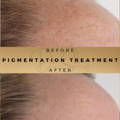
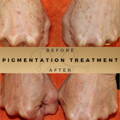
Types of Pigmented lesions we treat at Dr Sknn
Ephelides (Freckles)
Lentigines (also known as age spots or liver spots)
Solar Lentigines (also known as sun spots)
Seborrheic Keratosis
INTENSE PULSED LIGHT (IPL) - PIGMENTED LESIONS
Effective Treatment
Non-invasive
Precision Targeting
Minimal Discomfort
Quick Treatments
Gradual Improvement
Suitable for Various Skin Types
Clinically Proven
NHS Approved
At Dr Sknn we use the Lynton Lumina which is a state-of-the-art Intense Pulsed Light System (IPL), which is also used by the NHS and private hospitals across the UK, to treat pigmented lesions safely and effectively on skin types I-IV. By emitting light in a specific wavelength ranges at Dr Sknn the pigmented lesions will absorb the light causing them to heat up. The heat will damage the cells containing melanin, while causing minimal damage to the surrounding skin, the damaged lesion turn darker and may crust, over the following weeks they gradually flake away from the skin leaving little trace of the original lesion.
The area treated will also improve the tone and appearance of skin while stimulating the natural production of collagen resulting in a firmer and more youthful looking skin.

Some but not all pigmented lesions respond to IPL as such at Dr Sknn we provide a patient centered personalised tailor-made skincare regime that has a possible combination of 57 possible concentrations and 1159 possible combinations that have been dermatologically tested and are evidence based and contain no preservatives to tackle pigmented lesions unresponsive to IPL.



How Does IPL work on Pigmented lesions?
What are Ephelides (Freckles)?
What are Lentigines / Age Spots?
What are Solar Lentigines?
What are Seborrheic Keratoses?
What should I expect during the Consultation?

What should I expect during the Treatment?

What should I expect after the Treatment?
Post treatment the area will be cooled and a Soothe Serum will be applied to further cool the area, provide antibacterial effects reduce irritation while stimulating cell regeneration for faster recovery, you should use sun-block and avoid any sun exposure on the treated area for 2 weeks in addition to avoiding perfumed protects, hot baths, hot environments such as saunas, steam rooms for 48 hours.
Results are not immediately visible. Following treatment, the damaged lesions turn darker and may crust, over the following weeks they will gradually flake away from the skin leaving little trace of the original lesion.
What should I expect during the Consultation?

What should I expect during the Treatment?

What should I expect after the Treatment?
Post treatment the area will be cooled and a Soothe Serum will be applied to further cool the area, provide antibacterial effects reduce irritation while stimulating cell regeneration for faster recovery, you should use sun-block and avoid any sun exposure on the treated area for 2 weeks in addition to avoiding perfumed protects, hot baths, hot environments such as saunas, steam rooms for 48 hours.
Results are not immediately visible. Following treatment, the damaged lesions turn darker and may crust, over the following weeks they will gradually flake away from the skin leaving little trace of the original lesion.
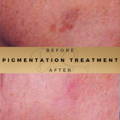

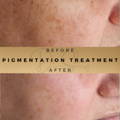

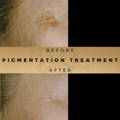
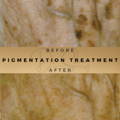
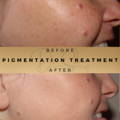
Frequently Asked Questions
How Long Does the Treatment Take?
How many Treatments are required?
Every how long can I have a treatment session?
How can I maintain my results?
First and foremost the avoidance of lifestyle factors and sun exposure in addition to using sun protection factor will prolong the results and reduce further age and sun related ageing.
Are there any Side Effects with IPL?
Who is unsuitable for the treatment?
Some of the contraindications are listed below. Please note that during the consultation we will assess suitability for the treatment
Individuals with a Sun tan (up to 4 weeks followingexposure) or use of sun beds (up to 4 weeks following exposure) or fake tan(minimum of 10 days delay) or any other tanning products (minimum of 10 daysdelay)
Individuals with Cancer, including any history of malignantmelanoma.
Pregnancy or breastfeeding
Who is suitable for the treatment?
How does the Treatment feel?
Is there any downtime following treatment?

